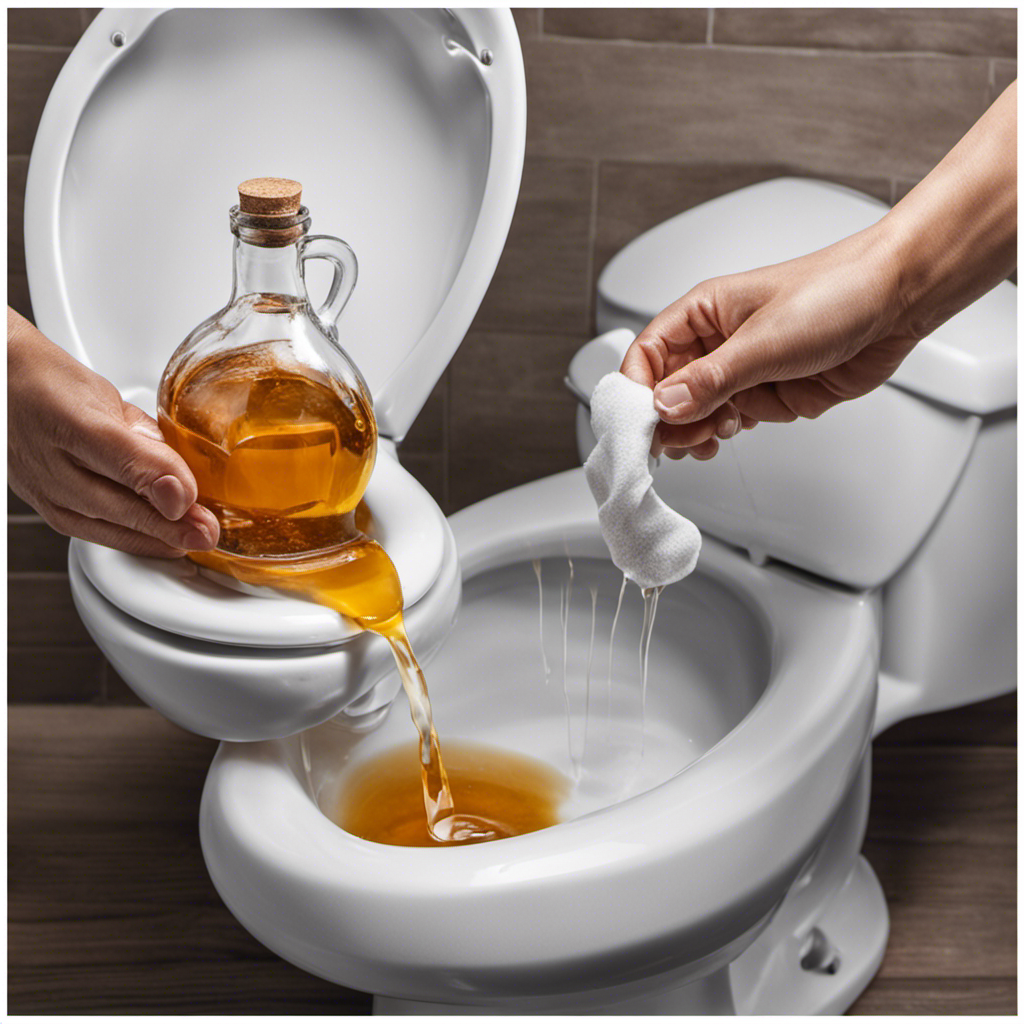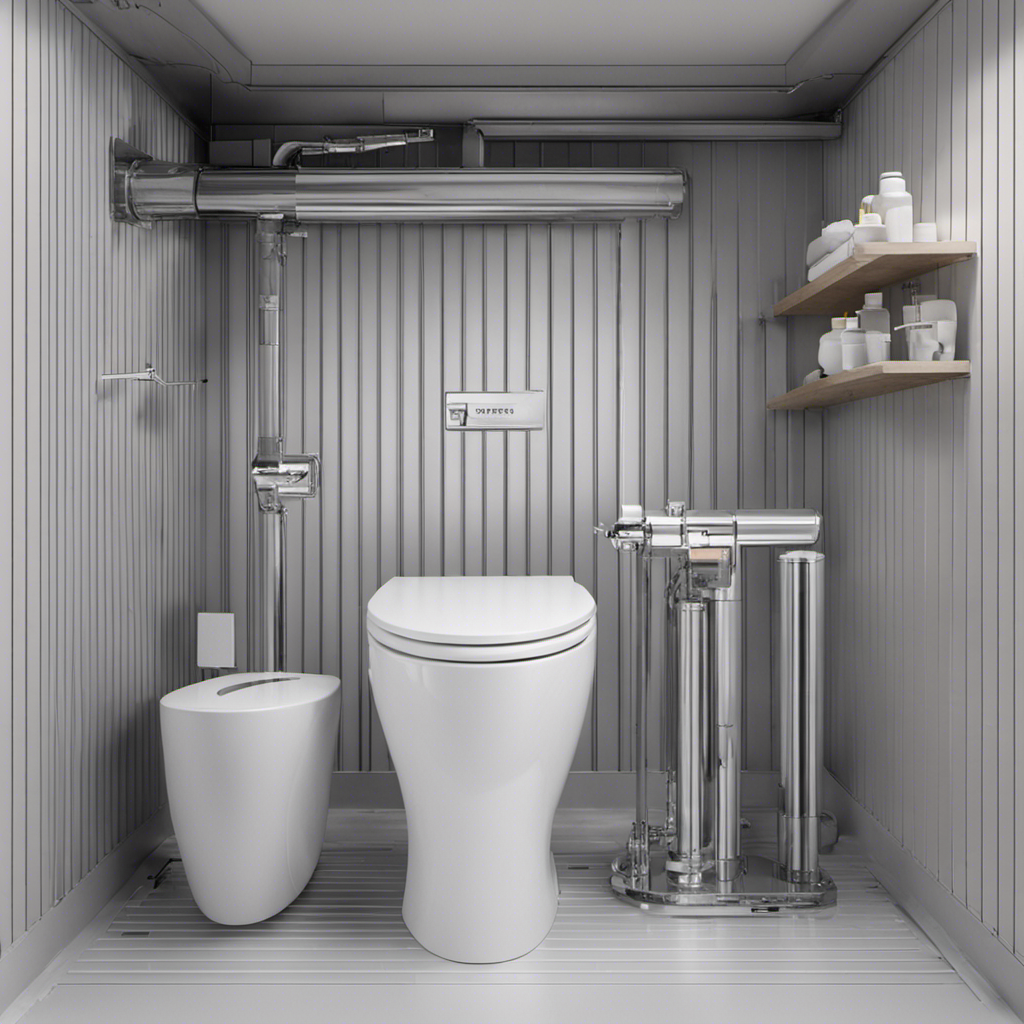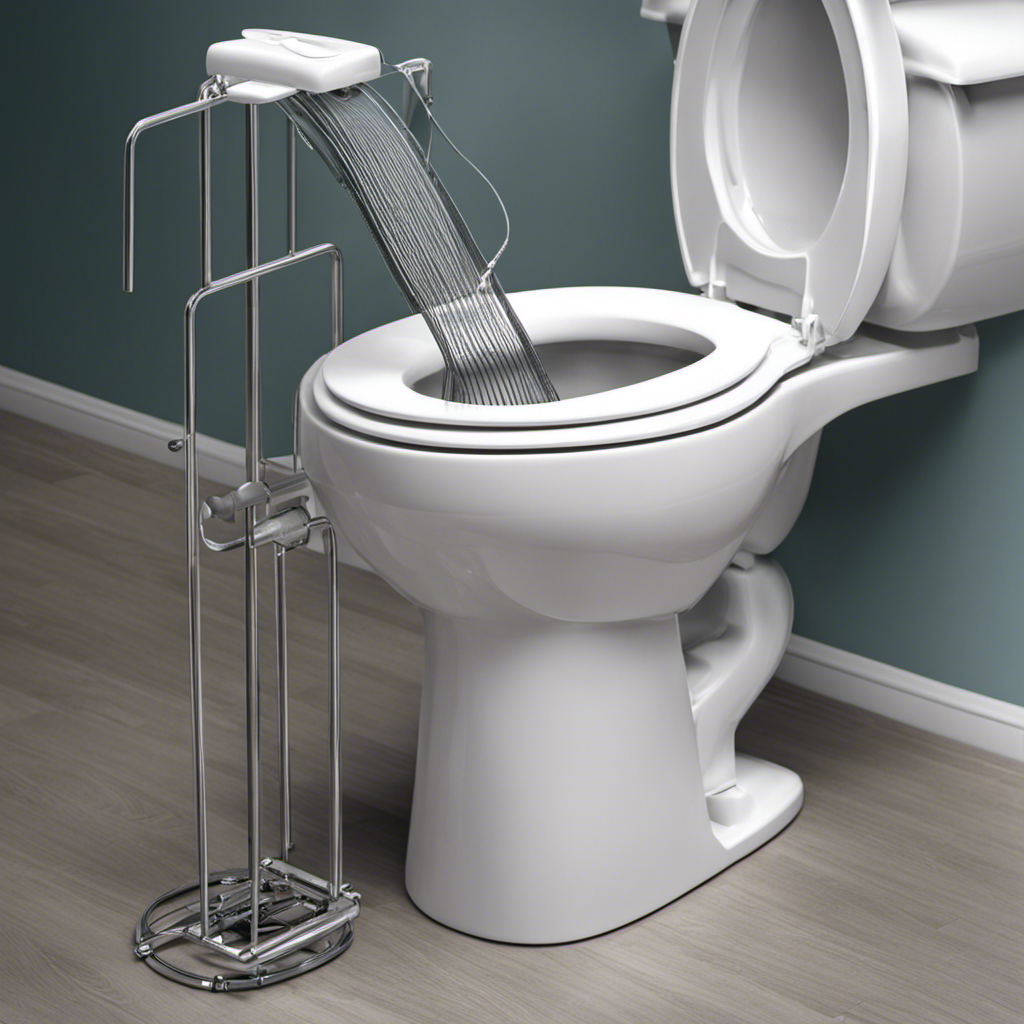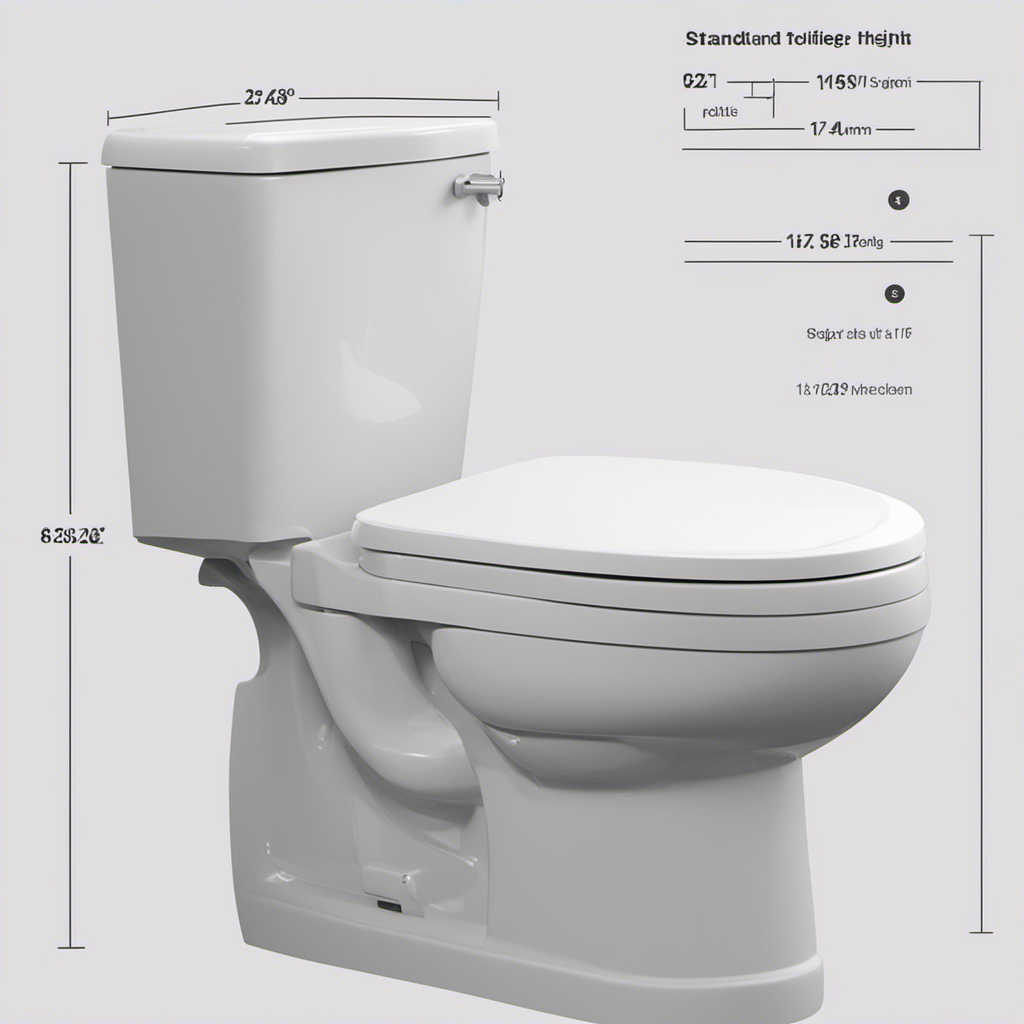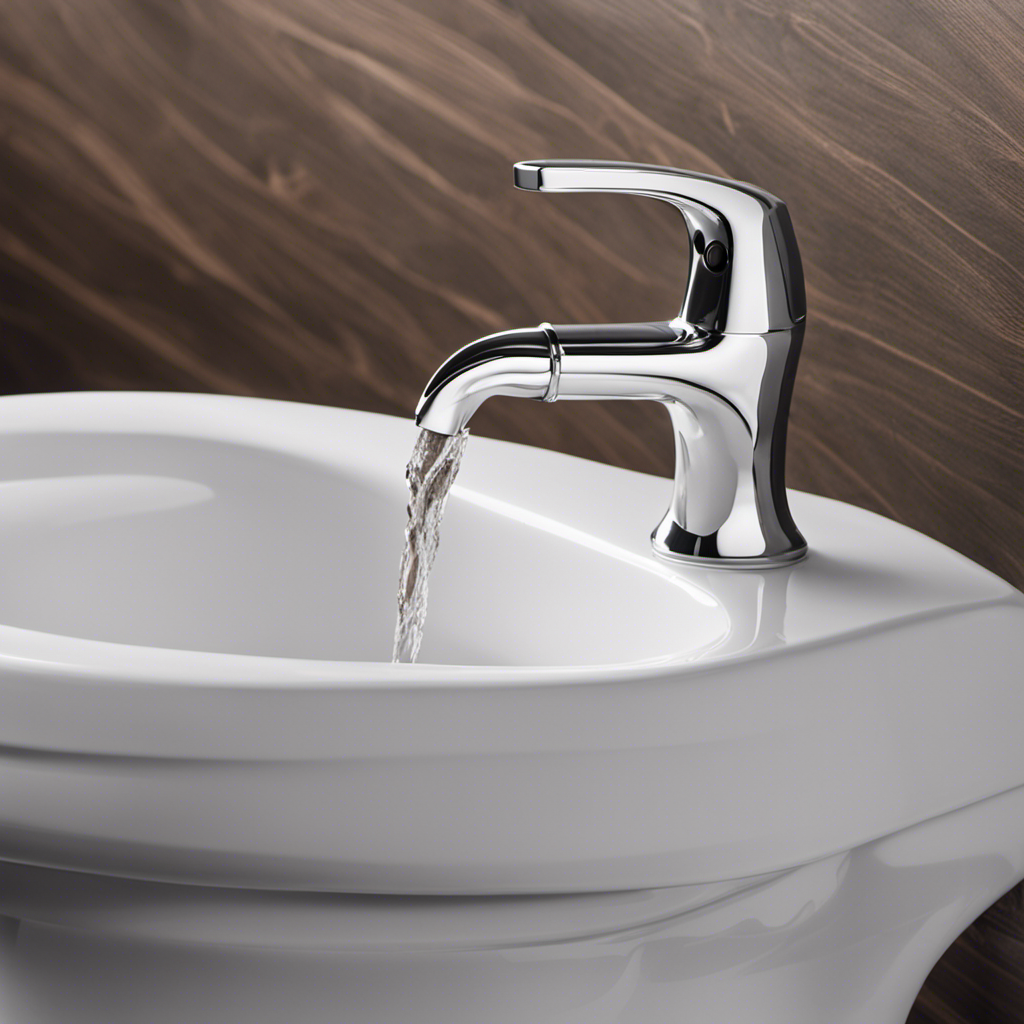Oh boy, have I got a story for you!
Picture this: you’re happily going about your day when suddenly, disaster strikes – your toilet is clogged. Panic sets in, and you start wondering what on earth you can pour down that porcelain throne to save the day.
Well, fear not, my friend, because I’ve got the answers you’re looking for. In this article, I’ll walk you through the different techniques, from chemical drain cleaners to homemade solutions, that can help unclog your toilet and get things flowing smoothly again.
So, let’s dive in and get that toilet back in tip-top shape!
Key Takeaways
- Chemical drain cleaners and homemade solutions can be used to dissolve clogs and restore flow, but they can be harsh on pipes.
- Baking soda and vinegar can create a chemical reaction to break down clogs. Pour half a cup of baking soda into the toilet bowl and slowly add a cup of vinegar. Let the mixture sit for a few minutes and then flush the toilet to check if the blockage is cleared.
- Enzyme-based products are a safe and effective alternative for stubborn clogs. They break down organic matter and provide a long-term solution while preventing future blockages.
- If the plunger doesn’t work, try using a toilet auger or the hot water method to unclog the toilet. Professional plumbing services are also an option for stubborn clogs, as plumbers have the knowledge, skills, and tools to tackle tough clogs.
Chemical Drain Cleaners
Chemical drain cleaners can be effective in unclogging toilets. These cleaners are designed to dissolve the clogs and restore proper flow. However, it is important to use them with caution and follow the instructions carefully.
There are different types of chemical drain cleaners available in the market, such as caustic and oxidizing cleaners. Caustic cleaners are highly alkaline and can break down organic matter, while oxidizing cleaners use chemicals like bleach to oxidize and dissolve the clogs. It is worth noting that these cleaners can be harsh on the pipes and may cause damage if used incorrectly.
If you prefer acidic alternatives or natural remedies, you can try pouring a mixture of baking soda and vinegar down the toilet. This combination creates a chemical reaction that can help break down the clog.
Homemade Solutions
Try using a mixture of baking soda and vinegar to help clear any blockages in your toilet. This homemade solution can be effective in breaking down clogs and restoring proper drainage. Here’s how you can use it:
- First, pour about half a cup of baking soda into the toilet bowl.
- Then, slowly add a cup of vinegar to the bowl.
- Let the mixture sit for a few minutes to allow the chemical reaction to occur.
- Afterward, flush the toilet and check if the blockage has been cleared.
If the clog persists, you can try another homemade solution using hot water and dish soap:
- Fill a bucket with hot water.
- Add a few tablespoons of dish soap to the water and mix well.
- Pour the mixture into the toilet bowl and let it sit for a while.
- Finally, flush the toilet to see if the clog is gone.
Using these homemade solutions can be a cost-effective and environmentally-friendly way to unclog your toilet. However, if these methods don’t work, it may be time to consider enzyme-based products for more stubborn blockages.
Enzyme-based Products
Enzyme-based products can be a reliable alternative for stubborn blockages in your toilet. These products are specifically designed to break down organic matter, such as hair, grease, and food particles, that can clog your pipes. The enzymes in these products work by breaking down the molecules that make up the blockage, allowing it to be easily flushed away.
What makes enzyme-based products so effective is their ability to target and eliminate the source of the blockage, rather than just temporarily clearing the toilet. Unlike harsh chemical cleaners, enzyme-based products are safe for your plumbing system and the environment. They also provide a long-term solution by preventing future blockages.
If you’re looking for alternative options to unclog your toilet, enzyme-based products are definitely worth considering.
Plunger Techniques
To effectively use a plunger, make sure to create a tight seal around the drain to generate the necessary suction for clearing blockages. Here are some techniques I recommend for using a plunger effectively:
- Start by filling the toilet bowl with enough water to cover the suction cup of the plunger.
- Position the plunger over the drain and push down firmly to create a seal.
- Begin plunging with an up-and-down motion, maintaining a strong grip on the handle.
- Continue plunging for about 10 to 15 seconds, then check if the water starts to drain.
If the plunger doesn’t work, you can try using a toilet auger, which is a specialized tool designed for clearing stubborn clogs. Another method you can try is the hot water method. Carefully pour a bucket of hot water into the toilet bowl and allow it to sit for a few minutes before attempting to plunge again.
Professional Plumbing Services
If you’re experiencing a stubborn clog that you can’t clear on your own, it may be time to consider hiring a professional plumbing service. When it comes to common toilet problems, sometimes the issue is more complex than it seems. That’s where a professional plumber can come in handy.
They have the knowledge, skills, and tools to tackle even the toughest clogs and ensure your toilet is working properly again. Additionally, professional plumbers can also handle emergency repairs, offering prompt and reliable services when you need them the most.
Whether it’s a clogged toilet, a leaky pipe, or a broken flush mechanism, hiring a professional plumbing service can save you time, effort, and potentially costly repairs down the line.
Frequently Asked Questions
How Long Does It Typically Take for a Chemical Drain Cleaner to Unclog a Toilet?
Chemical drain cleaners can typically unclog a toilet within 15-30 minutes. However, there are alternatives to chemical drain cleaners, such as using a plunger or a drain snake, which can also effectively clear a clogged toilet.
Can I Use a Homemade Solution for Unclogging My Toilet if I Have a Septic System?
Creating a concoction of vinegar and baking soda is a safe and effective alternative to chemical drain cleaners for unclogging toilets. It’s important to use septic safe unclogging methods when dealing with a septic system.
Are Enzyme-Based Products Safe to Use on All Types of Pipes and Plumbing Fixtures?
Enzyme-based products are generally safe to use on all types of pipes and plumbing fixtures. However, their effectiveness may vary depending on the severity of the clog. It’s important to consider the pros and cons before using them.
Can Using a Plunger Technique Cause Any Damage to the Toilet or Plumbing System?
Using a plunger technique can potentially damage the toilet or plumbing system if not done properly. It’s important to avoid common mistakes, like using excessive force. There are alternative methods to unclog a toilet without a plunger.
What Is the Average Cost of Hiring a Professional Plumber to Unclog a Toilet?
On average, hiring a professional plumber to unclog a toilet can cost around $150-$200. It’s important to consider this expense if DIY methods fail. A plumber’s expertise ensures the job is done correctly and avoids potential damage.
Conclusion
In conclusion, when faced with a clogged toilet, there are various options to unclog it effectively.
Chemical drain cleaners can be a quick fix, but homemade solutions using vinegar and baking soda can also do the trick. Enzyme-based products are a safer and more eco-friendly alternative.
Additionally, using plunger techniques can provide immediate results. However, if all else fails, it’s best to call in professional plumbing services.
Remember, like a magician’s disappearing act, the right solution will make that clog vanish in no time.
